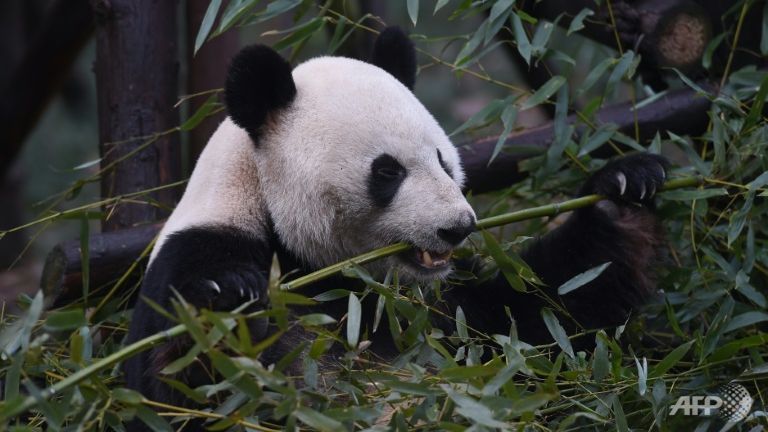-
Tips for becoming a good boxer - November 6, 2020
-
7 expert tips for making your hens night a memorable one - November 6, 2020
-
5 reasons to host your Christmas party on a cruise boat - November 6, 2020
-
What to do when you’re charged with a crime - November 6, 2020
-
Should you get one or multiple dogs? Here’s all you need to know - November 3, 2020
-
A Guide: How to Build Your Very Own Magic Mirror - February 14, 2019
-
Our Top Inspirational Baseball Stars - November 24, 2018
-
Five Tech Tools That Will Help You Turn Your Blog into a Business - November 24, 2018
-
How to Indulge on Vacation without Expanding Your Waist - November 9, 2018
-
5 Strategies for Businesses to Appeal to Today’s Increasingly Mobile-Crazed Customers - November 9, 2018
Giant panda no longer considered endangered species
Native to Chinese bamboo forests, the panda was upgraded from endangered to vulnerable on the Red List of Threatened Species, managed by the International Union for Conservation of Nature (IUCN).
Advertisement
Researchers are also anxious about other animals that are considered an extremely endangered species including the eastern gorillas of Central Africa.
The number of eastern gorillas has declined more than 70% in two decades.
The Eastern gorilla joins the Western gorilla – the type of gorilla Harambe was – Bornean Orangutan, and Sumatran Orangutan in the “critically endangered” category.
Worldwide groups and the Chinese government has worked to save wild pandas and breed them at enormous cost, attracting criticism that money could be better spent saving other animals facing extinction.
IUCN Director General Inger Andersen said during the press conference that it’s important to pay attention to the Red List assessment because it can be used to spur conservation efforts, such as what happened with China’s pandas. Of the 5,107 species considered critically endangered, around half are plants, with amphibians, molluscs and fish also having large numbers of species on the brink of extinction.
The giant panda is now officially no longer an endangered species, with officials announcing over the weekend that it’s been downgraded from “Endangered” to “Vulnerable”, following a 17 percent increase in population over the past 10 years.
Plains zebras have also declined by nearly a quarter in the past 14 years as a result of illegal hunting and are now “near threatened” on the latest Red List update.
“We live in a time of tremendous change and each IUCN Red List update makes us realise just how quickly the global extinction crisis is escalating”, he added.
According to China’s State Administration of Forestry 1,864 pandas remained in the wild, with another 375 in captivity at the end of 2013. That put the species on a watchlist as “near threatened” after being of least concern.
This is not the only recent instance of giant pandas being removed from an endangered species list.
Critically endangered: The Eastern gorilla.
It may be the poster animal for endangered species awareness, but it appears the giant panda has bounced back.
Due to successful conservation actions, the Tibetan Antelope has moved from Endangered to Near Threatened. The current threats, he said, come from increasing human activity, such as mining operations in the animals’ habitats. It is the most comprehensive analysis of endangered species and guides government policy around the world, said Cristian Samper, president and CEO of the Wildlife Conservation Society.
But the International Union for Conservation of Nature (IUCN) warns the slight improvement in the numbers of the Giant Panda could be undone by advancing climate change. This fall is largely due to habitat loss caused by violence in Rwanda and illegal hunting for bushmeat. According to the IUCN, the three main threats to the animals’ safety are poaching, habitat loss and the continued civil unrest in the African region.
Advertisement
Yesterday, IUCN, its Species Survival Commission, and nine Red List partner institutions forged an exciting new commitment to support The IUCN Red List. It is now listed as “vulnerable” after conservation efforts helped protect its habitat.




























